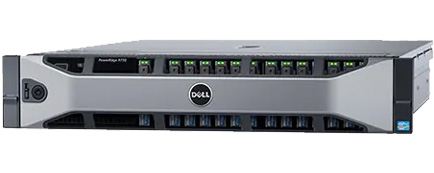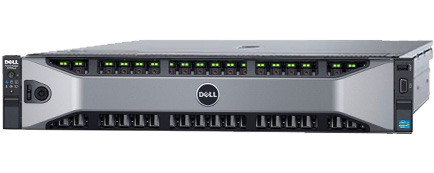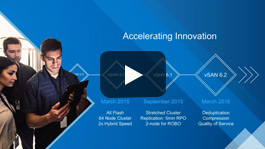Dell PowerEdge R730 vs R730xd Server Comparison
Posted by Ryan Brown on Mar 24, 2021
Summary of Server Differences
Unless budget is extremely tight or you need GPUs, I would always recommend the Dell PowerEdge R730xd over the Dell PowerEdge R730. The GPU capability is the only benefit of the R730 over the R730xd. Most all other specs are exactly the same except the R730xd has more drives and more locations to put drives. They have done a great job with some of the 13th generation Dell servers in adding drive bays in the rear of the server. With the R730xd, you get 50% more drives up front and then an optional 2 additional drives in the rear of the server. That gives a lot more flexibility. You can use larger drives and save the extra bays for future expansion or use more smaller drives which can decreases cost while increasing IOPS. You do sacrifice the ability to have a DVD drive in the server, but that is a small price to pay when most everything is loaded through the DRAC.
If you do need to save a few hundred dollars on your server build, then you can still feel confident with the Dell R730. It is a great well-balanced server with a lot of power, just not as many drive options as the R730xd.

Dell PowerEdge R730
General Server Details:
- CPU(s): 2 x Intel E5 Multi Core
- Memory: 24 DIMM Slots (Max 1.5TB)
- RAID: PERC H330, PERC H730 1GB NV, PERC H730P 2GB NV
- HDD: 2.5" or 3.5" Hot Swap SAS, SATA and Near Line SAS
- RISER: 7 PCIe Slots (4 Full Height, 3 Half Height)
- Power: 495W or 750W or 1100W Hot Swap Redundant

Dell PowerEdge R730xd
General Server Details:
- CPU(s): 2 x Intel E5 Multi Core
- Memory: 24 DIMM Slots (Max 1.5TB)
- RAID: PERC H330, PERC H730 1GB NV, PERC H730P 2GB NV
- HDD: 2.5" or 3.5" Hot Swap SAS, SATA and Near Line SAS
- RISER: 6 PCIe Slots (3 Full Height, 3 Half Height)

 xByte's 13th Gen Server Chat
xByte's 13th Gen Server Chat  Bringing the All-Flash Virtual SAN to the SMB
Bringing the All-Flash Virtual SAN to the SMB  Tech Chat: Upgrading Your Server
Tech Chat: Upgrading Your Server